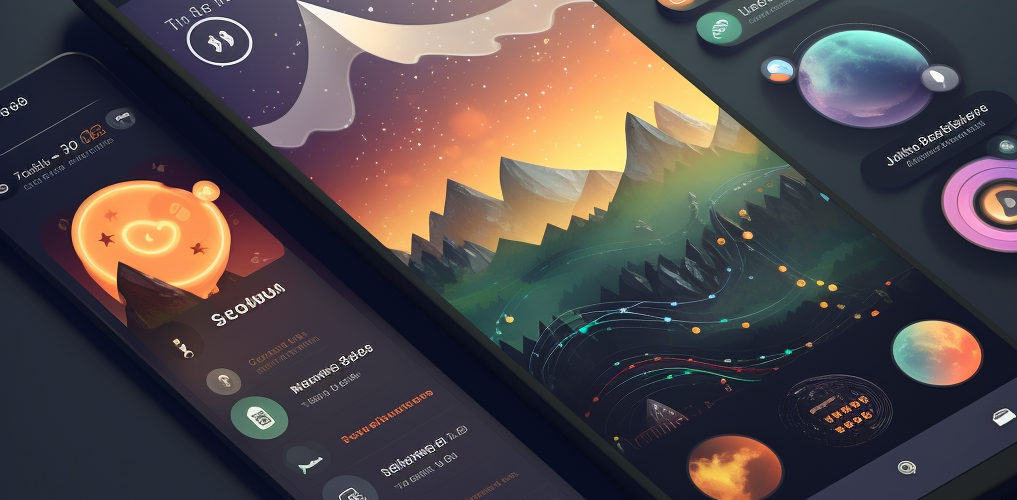Mobile applications have become an essential part of our everyday lives in the fast-paced digital environment of today. Apps have completely changed how we engage with technology, from social networking and e-commerce to productivity tools and entertainment. The environment of app development is always changing as a result of emerging trends and technology. We’ll look at a few of the key themes that are spurring innovation in app development in this post.
- Artificial Intelligence (AI) and Machine Learning (ML):
By enabling apps to learn from user behaviour, personalise content, and offer insightful insights, AI and ML are revolutionising the app development environment. Artificial intelligence-powered virtual assistants like Siri and Google Assistant are already widely used and improve user experiences by processing and comprehending natural language. In addition, massive volumes of data are analysed by ML algorithms to optimise the performance of apps, making them more effective and user-friendly.
2. Internet of Things (IoT) Integration:
The Internet of Things connects numerous devices and enables inter-device communication. IoT is being used by app developers to build intelligent applications that communicate with connected gadgets and provide customers seamless management over their smart homes, wearables, and other IoT-enabled devices. IoT integration is boosting ease and automation for a variety of tasks, like altering thermostat settings, remotely turning on lights, and recording fitness data.

3. 5G Technology:
With the introduction of 5G technology, internet speeds will soar and latency will be drastically decreased. By enabling real-time interactions, streaming in ultra-high resolution, and improved overall performance, this breakthrough technology is anticipated to revolutionise app development. With 5G, apps can deliver content more quickly and more effectively use cloud-based resources, which will significantly change how consumers interact with mobile applications.
4. Augmented Reality (AR) and Virtual Reality (VR):
Beyond gaming and entertainment, AR and VR technologies are finding use in sectors including retail, real estate, and education. Users may utilise augmented reality (AR) to superimpose digital features on the physical environment, improving product visualisation and generating engaging experiences. VR, on the other hand, immerses users in virtual settings and provides engaging entertainment and training scenarios. These technologies are being used by app developers to provide engaging user experiences.

5. Progressive Web Apps (PWAs):
PWAs connect mobile applications with conventional webpages. They provide a dependable and responsive user experience, irrespective of the network or device circumstances. PWAs provide capabilities like offline access, push alerts, and automated upgrades. They are also lightweight and quick to load. In order to reach a larger audience without requiring consumers to download and install native applications, businesses are implementing PWAs.
6. Biometric Authentication:
Biometric authentication has become a trend in app development due to worries about data breaches and identity theft. Users now have a quick and safe method to access their apps and data thanks to security measures like fingerprint, face, and iris scanning.

7. Blockchain Technology:
Beyond cryptocurrencies, blockchain’s decentralised and secure nature is finding uses. Blockchain is being included by app developers to improve data security, promote transparency, and facilitate peer-to-peer transactions. Blockchain is altering several sectors and how apps handle sensitive data, from supply chain management to digital identity verification.
8. Low-code/No-code Development:
Low-code and no-code development platforms have emerged in response to the desire for quicker app creation. With the help of these tools, programmers and even non-technical individuals may easily design applications. App development is made more accessible, affordable, and timely by utilising pre-built components and visual interfaces.
9. Sustainability and Green Initiatives:
App developers are integrating green practises into their development processes as worries about sustainability increase. Developers work to produce eco-friendly programmes that have a low impact on the environment by optimising code and cutting energy use.

10. On-demand Apps:
The on-demand economy is booming, and on-demand applications are becoming more popular in a number of industries, including home services, ride-sharing, and food delivery. These apps seamlessly link customers and service providers, making it easy and quick to buy products and services.



